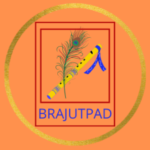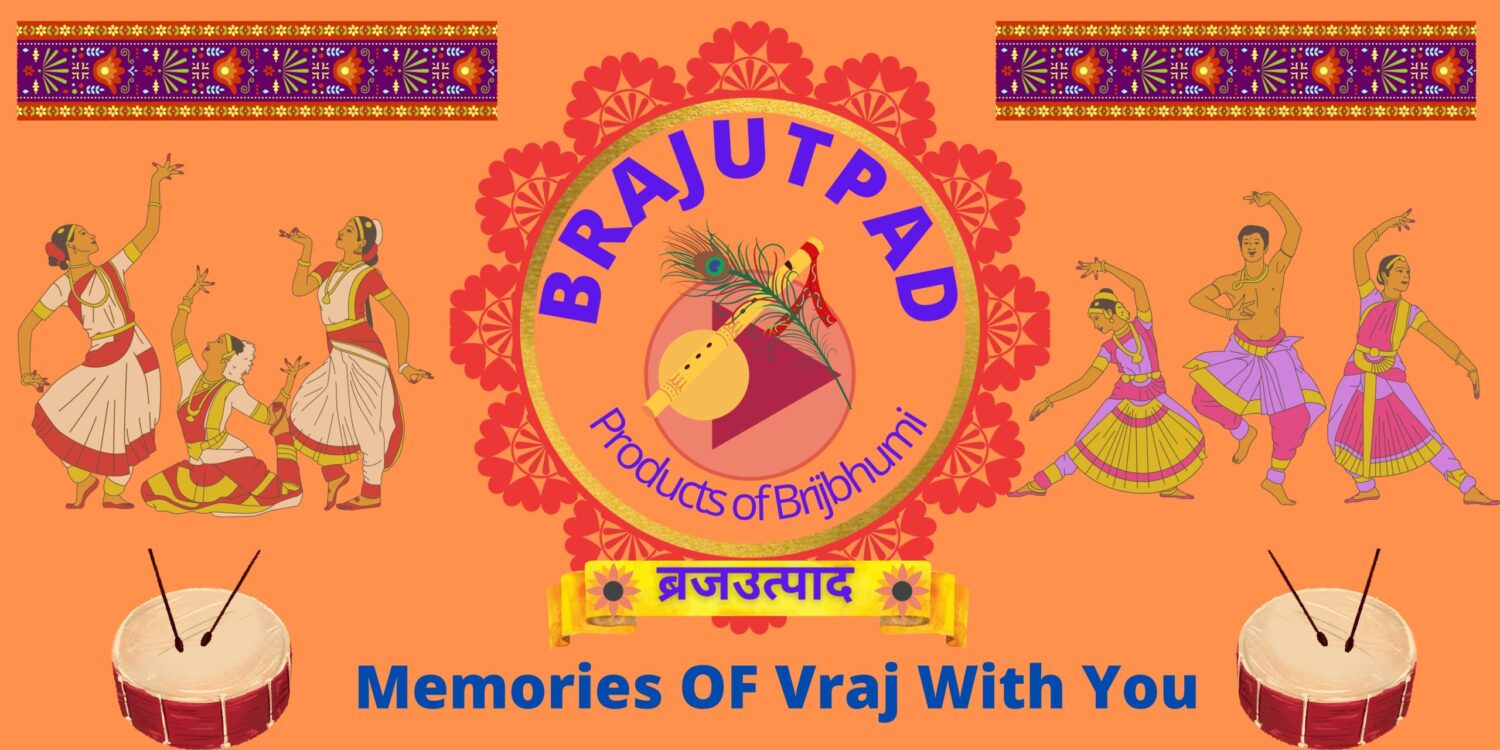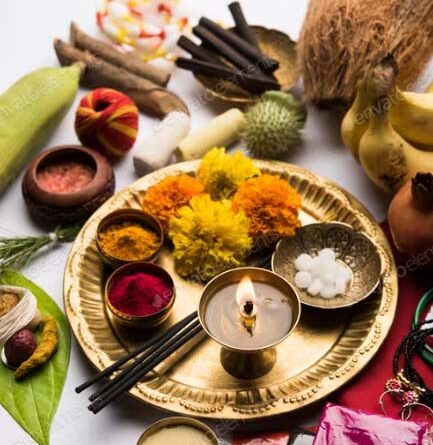Concept of Daily Puja or Worship
Concept of Daily Puja in Hinduism
I would like to quote a Sanskrit Shloka from Shrimadbhagwatam to start with which has a connection with the necessity of performing daily puja –
ऋणैस्त्रिभिद्विजो जातो देवर्षिपितृणां प्रभो ।
यज्ञाध्ययनपुत्रैस्तान्यनिस्तीर्य त्यजन् पतेत् ॥ 10.84.39 ॥
The Shloka says that those who are twice-born or द्विज owe three types of debts they are supposed to repay during their lifetime. These debts are Deva- rin ( देव-ऋण), PitrPitr rin (पितृ-ऋण) andand andRsiRsi-rin i(ऋषि-ऋण).If a Dvija leaves his body without repaying these debts he will fall down to hell.
What are the Three Debts to be repaid by Daily puja?
Thus we can conclude that in Hinduism repayment of these debts is a must. Let us understand how these debts are to be repaid —
- Deva- rin ( देव-ऋण) Debts to gods – it is repaid by performing Yajnas यज्ञ.
- Pitr rin (पितृ-ऋण) debtor Debts to ancestors – it is repaid by begetting a son and performing Shraddha Karma (श्राद्धकर्म).
- RsiandRRsi-rin (ऋषि-ऋण) Debt to the sages – it is repaid by Svadhyaya or study of scriptures and Tapas (तप).
Thus it can be easily established that certain obligatory duties have been coined for a Hindu just to ensure a perfectly stable social configuration. Again the concept of four Purusharthas (पुरुषार्थचतुष्ट्य) the four pillars of Hinduism set the four goals of the life of a Hindu i.e. Dharma, Artha, Kaam and Moksha (धर्म,अर्थ,काम तथा मोक्ष ) also empower the theory of three debts.
Why Perform Daily Puja?
Now let us come to the main topic – the necessity of performing Daily worship and rituals in Hinduism.
This is directly related to the first debt or Dev-rin ( देव-ऋण). This can be easily understood with the fact that just after birth a child has easy access to everything made available by the Supreme being for fulfilling his needs. This makes him indebted to the Gods which has been defined as Dev-rin. We are obliged to repay this debt. This debt is to be repaid by simply performing various rituals and worship. We are supposed to do daily worship or Puja so that no debt is accumulated.
Now let us understand what is Puja. Apte Sanskrit Hindi Dictionary has two words पूज् and पूजा having the same meaning – आराधना करना,सम्मान करना. In my view, the first one आराधना करना perfectly fits here as perfectPuja or आराधना is the act of awakening the indwelling spirit in our body. This act is performed by offering Jalam or water, Pushpam or flowers, Chandan or sandal paste, Dhoop, Deep or lamp, Naivaidya and Japam (जप) or chanting mantra with a Japa Mala (Rosary) to the प्राणप्रतिष्ठित श्रीविग्रह or the idol which is made alive or charged one wishes to worship.
DDailyDaily puja is normally done at home. On all the auspicious occasions or festivals Onpujaspecial special puja is performed collectively in the temples.
For performing daily puja we follow various steps in seriatim. These are called Upchar उपचार. The Upchars may be Panchopachar or five, Shodashopachar or Sixteen and Chatushashtyopachar or Sixty four in number. Normally Shodashopachar system is used except for specific puja. We need a set of different articles for offering these Upchars which are described here –
Articles for offering Upchars in Daily Puja
- Jal Patra with Achmani – Jal or water is essential for offering Padya, Arghya and Achman, the three Upachars to be offered at the beginning of Deity worship.
- Kalash – containing holy water with Ganga Jal is established at first hand almost in all the pujas. Cosmic powers of Varun Devata are invoked on it.
- Deepak – We light a Ghee or Mustard Oil Deepak (or lamp) up to the completion of the puja. Deepak symbolizes Agni Devata (Fire god) hence cosmic powers of Agni Devata are invoked in it.
- Ghanti or the bell – It activates the Raksha or saviour form of the deity normally used during Aarti.
- Shankh or Conch shell – Shankh is regarded sacred and very auspicious as Shri Vishnu holds it in one of His hands. To initiate religious ceremonies Conch shell is blown. During Aarti, Shankh is also blown along with- other instruments. The vibrations from Shankh overpower evil forces and remove negativity. Now it has been scientifically proved that atmosphere is cleared of environmental pollution where Shankh is blown.
- Gandha – Sandalwood powder or paste and fragrant essence of Flowers. The nice fragrance activates the cosmic fragrance making the atmosphere spiritual.
- Dhoop – The Dhoop stick is also lit to emanate fragrance in the puja place and to purify the air.
- Kumkum or Roli – This is a red powder made from turmeric that symbolizes happiness and auspiciousness. Offered at the centre of the forehead of the deity and used as tilaka.
- Akshat – Mostly used mixed with Kumkum called Kumkumakshat. Unbroken rice grains are used in puja. Offering Kumkumakshat gives wealth and prosperity.
- Aarti – Another Deepak is used for offering Aarti to the Deity. Normally Ghee or camphor is used in Aarti. Sometimes Aarti with five wicks is used. This makes the place of puja full of divine consciousness and makes the atmosphere pure and auspicious.
- Naivaidya Patr – This is a plate used for offering Prasadam to the deity. Later this Prasadam is distributed among the devotees after the completion of the puja.
- Panchpatra – Is a cylindrical Patr primarily used for keeping holy water to be used in Puja and Charanamrit of the deity to be distributed along with Prasadam.
- Moli – Also known as Kalawa is a red and yellow cotton thread considered very sacred. It is used almost in all the pujas. First offered to the deity and later tied as Raksha around the wrist of the right hand of male members and generally the left wrist of female members.
- Betel Nut and Betel Leaf – offered after Naivaidya to the deity for much Shuddhi.
- Coconut – This is very auspicious used for Kalash. It is also offered at the end of puja to the Deity.
- Dakshina – On completion of the puja Dakshina is offered to the deity as a symbol of respect.
From the above description, it can be easily understood the prevalence of Panch Tattvas the five elements in our daily puja. As per our scriptures, our body and the whole universe are made up of these five elements viz. Water, Earth, Air, Fire and Akash. We have used Water and Fire in the Kalash and Deepak. Earth is worshipped while sitting on the Asana for puja in the beginning. Air and Akash are present everywhere and worshipped by doing Pranayam at the beginning of Puja. Thus we also worship these five elements in our daily worship.
The essential Puja materials or articles are easily available in the market or online. For details Product Section of our website may be visited:




Good post. I learn something totally new and challenging on websites I stumbleupon every day. Its always exciting to read articles from other authors and use something from other sites.
I think this internet site contains very excellent composed content material content.
Thanks for your appreciation and encouragement. This may help me to compose materials of your liking in future as well. I am on the job.
I’ve been absent for some time, but now I remember why I used to love this website. Thank you, I will try and check back more often. How frequently you update your website?
You are welcome back. I update as and when I complete my research on new topics. You’ll find recent posts soon. Thanks for liking & loving the website.
Онкология является одной из самых серьезных медицинских проблем в мире, и в Германии рак считается одной из ведущих причин смерти. Однако Германия славится своей высокоразвитой медицинской инфраструктурой и высококвалифицированными врачами, что делает ее одним из лучших мест для лечения рака. https://blotos.ru/news/lechenie-raka-v-germanii-metody-borby.html. Лечение рака в Германии включает в себя комплексный подход, который включает в себя хирургическое, радиотерапевтическое и химиотерапевтическое лечение. Хирургия является основным методом лечения многих типов рака, в том числе операция на опухоль или ее отделение.
Обращайтесь за помощью вовремя! Будьте здоровы. #организауия лечение в Германии #доступность медицинской помощи #обязательно прочитать.
Thanks